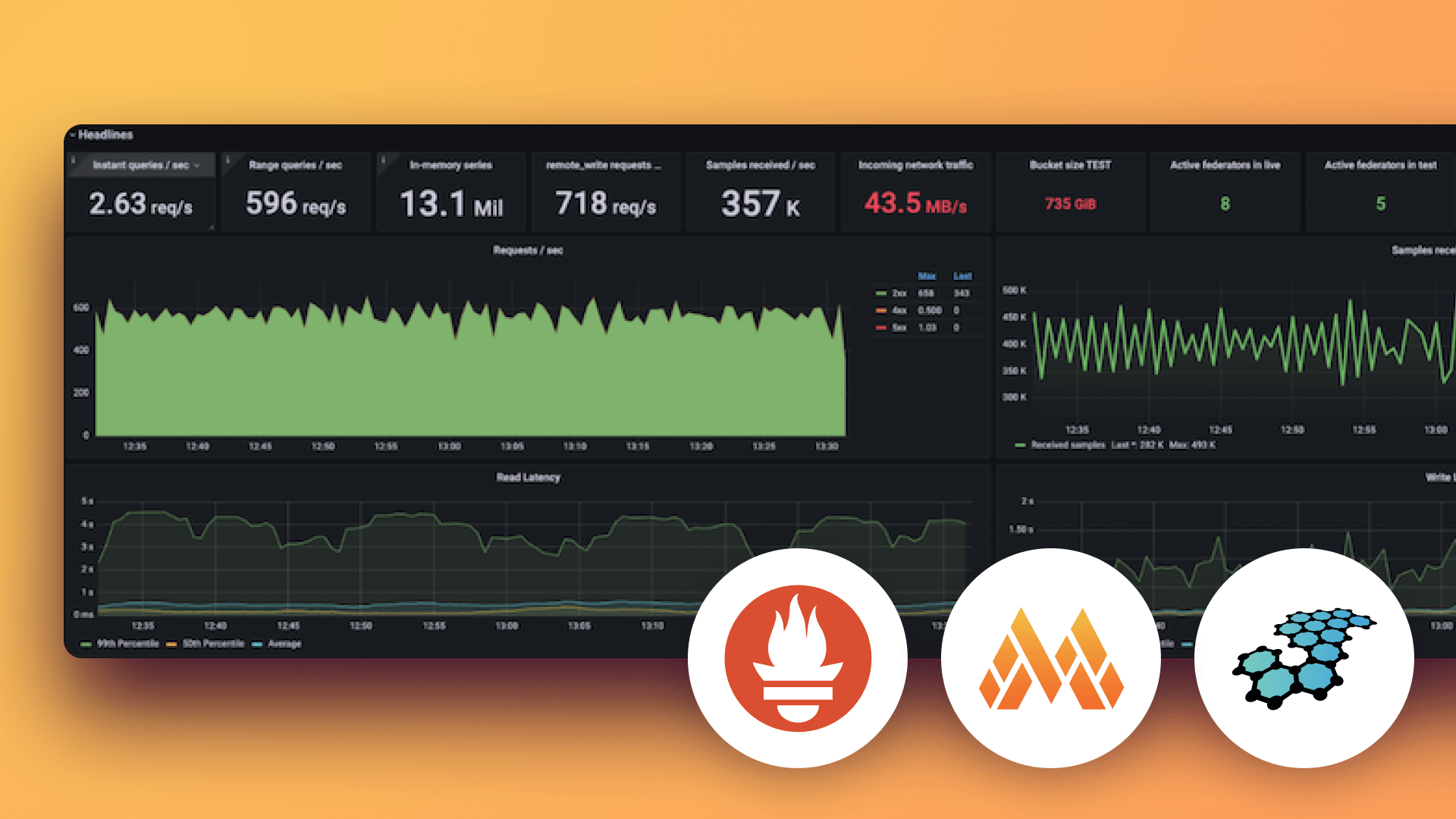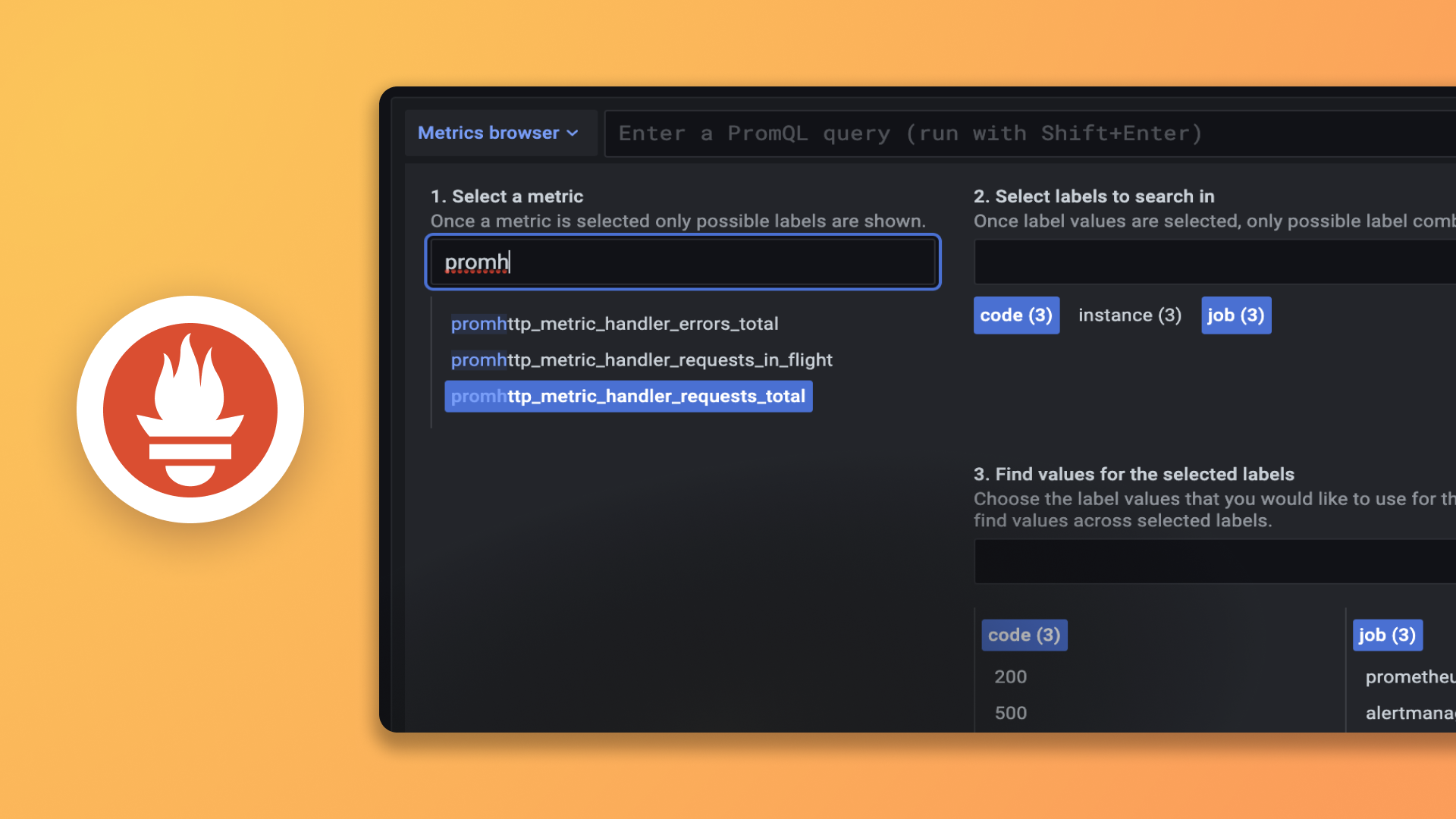Grafana Mimir store-gateway
Store-gateway 组件是有状态的,它从长期存储中查询块。在读取路径上,无论是来自用户的查询还是评估规则时产生的查询,querier 和 ruler 都会使用 store-gateway。
Bucket 索引
为了在查询时找到要查找的正确块,store-gateway 需要长期存储中 bucket 的视图。Store-gateway 通过定期下载bucket 索引来保持 bucket 视图的更新。
为了发现每个租户的块和块删除标记,store-gateway 在启动时会为其分片中的每个租户从长期存储中抓取bucket 索引。
对于发现的每个块,store-gateway 会将索引头下载到本地磁盘。在这个初始 bucket 同步阶段,store-gateway 的 /ready 就绪探测端点会报告未就绪状态。
有关 bucket 索引的更多信息,请参阅bucket 索引。
Store-gateway 定期重新下载 bucket 索引,以获取长期存储的更新视图,并发现由 ingester 和 compactor 上传的新块,或由 compactor 删除的块。
自 store-gateway 最后一次检查块以来,compactor 可能已经删除了块或标记了其他块进行删除。Store-gateway 会下载新块的索引头,并卸载(删除)已删除块的本地索引头副本。你可以通过配置 -blocks-storage.bucket-store.sync-interval 标志来控制 store-gateway 检查长期存储更改的频率。
当查询执行时,store-gateway 会下载 chunks,但不会完全下载整个块;store-gateway 只会下载运行给定查询所需的索引和 chunks 部分。为了避免 store-gateway 在后续重启时不得不重新下载索引头,我们建议在运行 store-gateway 时使用持久化磁盘。例如,如果你在 Kubernetes 中运行 Grafana Mimir 集群,可以为 store-gateway 使用带有 PersistentVolumeClaim 的 StatefulSet。
有关索引头的更多信息,请参阅二进制 index-header 文档。
块分片和复制
Store-gateway 使用块分片来在大型集群中水平扩展块。
块会根据通过 -store-gateway.sharding-ring.replication-factor 配置的复制因子在多个 store-gateway 实例之间进行复制。块复制用于防止因某些块在给定时间未被任何 store-gateway 实例加载而导致的查询失败,例如在 store-gateway 故障或重启 store-gateway 实例(例如,在滚动更新期间)时。
Store-gateway 实例构建一个hash 环,并在环中注册的 store-gateway 实例池中对块进行分片和复制。
Store-gateway 持续监控环状态。当环拓扑发生变化时,例如,添加或删除新实例,或实例变得健康或不健康时,每个 store-gateway 实例会重新同步分配给其分片的块。store-gateway 重新同步过程使用与环中分配给该实例的令牌范围匹配的块 ID 哈希。
store-gateway 会加载属于其 store-gateway 分片的每个块的索引头。store-gateway 加载块的索引头后,该块即可供 querier 查询。当 querier 通过 store-gateway 查询块时,响应中包含被查询的块 ID 列表。如果 querier 尝试查询 store-gateway 尚未加载的块,则 querier 会在另一个 store-gateway 上重试查询,最多重试到 -store-gateway.sharding-ring.replication-factor 的值(默认为 3)。如果无法从任何副本成功查询到该块,则查询失败。
注意
你必须通过
-store-gateway.sharding-ring.*标志或其相应的 YAML 配置参数来配置hash 环。
分片策略
Store-gateway 使用 shuffle 分片将每个租户的块分散到 store-gateway 实例的一个子集上。
注意
使用 shuffle 分片时,只有一部分 store-gateway 实例会加载租户的块。
这将租户工作负载引入的问题影响范围限制在其分片实例内。
-store-gateway.tenant-shard-size 标志(或其相应的 YAML 配置参数)决定了每个租户的默认 store-gateway 实例数量。limits overrides 中的 store_gateway_tenant_shard_size 可以按租户覆盖分片大小。
默认的 -store-gateway.tenant-shard-size 值为 0,这意味着租户的块会分布在所有 store-gateway 实例上。
有关 shuffle 分片的更多信息,请参阅配置 shuffle 分片。
自动遗忘
Store-gateway 包含一个自动遗忘功能,当 store-gateway 未正确关闭时,可以使用此功能将实例从另一个 store-gateway 的环中注销。在正常情况下,当 store-gateway 实例关闭时,它会自动从环中注销。但是,如果发生崩溃或节点故障,实例可能无法正确注销,这会在环中留下一个虚假条目。
自动遗忘功能的工作原理如下:当一个健康的 store-gateway 实例识别到环中的某个实例不健康时长超过配置的 -store-gateway.sharding-ring.heartbeat-timeout 值的 10 倍时,健康的实例会将不健康的实例从环中移除。
通过设置 -store-gateway.sharding-ring.auto-forget-enabled=false 可以禁用 store-gateway 自动遗忘功能。
区域感知
Store-gateway 复制可选地支持区域感知。当你启用区域感知复制且块复制因子大于 1 时,每个块都会被复制到位于不同可用区的 store-gateway 实例中。
为 store-gateway 启用区域感知复制:
- 通过
-store-gateway.sharding-ring.instance-availability-zoneCLI 标志或其相应的 YAML 配置参数配置每个 store-gateway 的可用区。 - 通过
-store-gateway.sharding-ring.zone-awareness-enabledCLI 标志或其相应的 YAML 配置参数启用块区域感知复制。在 store-gateway、querier 和 ruler 上设置此区域感知复制标志。 - 要应用新配置,请滚动更新 store-gateway、querier 和 ruler。
启动时等待环稳定
如果集群冷启动或同时扩容到两个或更多 store-gateway 实例,这些 store-gateway 可能会在不同时间启动。因此,store-gateway 会根据 hash 环的不同状态运行初始块同步。
例如,在冷启动时,第一个加入环的 store-gateway 可能会加载所有块,因为分片逻辑是基于环的当前状态运行的,而当前环中只有一个 store-gateway。
为了减少 store-gateway 在不同时间启动的可能性,你可以配置 store-gateway 在启动时等待环稳定。当在 -store-gateway.sharding-ring.wait-stability-min-duration 标志中指定的最小持续时间内没有实例被添加到或从环中移除时,环被认为是稳定的。如果在达到 -store-gateway.sharding-ring.wait-stability-max-duration 标志中指定的最大持续时间后环仍在变化,store-gateway 将停止等待稳定环并继续启动。
要在启动时启用等待环稳定,请使用 -store-gateway.sharding-ring.wait-stability-min-duration=1m 启动 store-gateway,这是生产系统的推荐值。
块索引头
索引头是块索引的一个子集,store-gateway 从长期存储下载并保存在本地磁盘上。将索引头保存在本地磁盘上可以加快查询执行速度。
索引头懒加载
默认情况下,store-gateway 将索引头下载到磁盘,直到需要时才加载到内存。当查询需要时,索引头会被加载,并在经过你在 -blocks-storage.bucket-store.index-header.lazy-loading-idle-timeout 中指定的不活动时间后由 store-gateway 自动释放。
Grafana Mimir 提供了一个配置标志 -blocks-storage.bucket-store.index-header.lazy-loading-enabled=false 来禁用索引头懒加载。禁用后,store-gateway 在启动时会加载所有索引头,这使得查询时可以更快地访问索引头中的数据,但代价是启动时间更长。然而,在一个拥有大量块的集群中,每个 store-gateway 可能都会加载大量的索引头,而不管它们在查询时被使用的频率如何。
加载索引头时,只有一部分会保留在内存中以减少内存使用。索引头的其余部分根据需要从磁盘读取。这要求 store-gateway 有可用的内存供操作系统用于缓存磁盘访问。
缓存
store-gateway 支持以下类型的缓存
我们建议你在生产环境中使用缓存。有关配置缓存的更多信息,请参阅生产环境技巧。
索引缓存
Store-gateway 可以使用缓存来加速从块索引中查找序列和标签。store-gateway 支持以下后端
inmemorymemcached
内存索引缓存
默认情况下,inmemory 索引缓存是启用的。
使用内存索引缓存的权衡考量如下
- 优点:没有延迟。
- 缺点:当复制因子 > 1 时,驻留在 store-gateway 内存中的数据会在不同实例之间重复。这会导致整体内存使用量增加和缓存命中率降低。
你可以使用 -blocks-storage.bucket-store.index-cache.inmemory.max-size-bytes 标志或其相应的 YAML 配置参数来配置索引缓存最大大小。
Memcached 索引缓存
memcached 索引缓存使用 Memcached 作为缓存后端。
使用 Memcached 索引缓存的权衡考量如下
- 优点:通过创建 Memcached 集群,你可以扩展到单个节点的内存之外,该集群由多个 store-gateway 实例共享。
- 缺点:与使用内存缓存相比,系统在缓存往返中会遇到更高的延迟。
Memcached 客户端使用跳跃哈希算法将缓存条目分片到 Memcached 服务器集群中。由于 memcached 客户端使用跳跃哈希算法,请确保 memcached 服务器未位于负载均衡器之后,并配置 memcached 服务器的地址,以便在进行扩容或缩容时,服务器可以从列表的末尾添加或移除。
例如,如果你在 Kubernetes 中运行 Memcached,你可以
- 使用 StatefulSet 部署你的 Memcached 集群。
- 为 Memcached StatefulSet 创建一个 headless service。
- 使用
dnssrvnoa+服务发现配置 Mimir 的 Memcached 客户端地址。
配置 Memcached 后端:
- 使用
-blocks-storage.bucket-store.index-cache.backend=memcached。 - 使用
-blocks-storage.bucket-store.index-cache.memcached.addresses标志设置 Memcached 服务的地址。
DNS 服务发现会解析 Memcached 服务器的地址。
Chunks 缓存
Store-gateway 还可以使用缓存来存储从长期存储中抓取的chunks。Chunks 包含实际样本,如果查询在同一时间范围内命中相同的序列,则可以重复使用。Chunks 只能缓存到 Memcached 中。
要启用 chunks 缓存,请设置 -blocks-storage.bucket-store.chunks-cache.backend=memcached。你可以通过包含前缀 -blocks-storage.bucket-store.chunks-cache.memcached.* 的标志来配置 Memcached 客户端。
注意
还有其他以
-blocks-storage.bucket-store.chunks-cache.*前缀开头的底层标志,你可以使用它们来配置 chunks 缓存。
元数据缓存
Store-gateway 和 querier 可以使用 memcached 缓存以下 bucket 元数据
- 租户列表
- 每个租户的块列表
- 块
meta.json存在性和内容 - 块
deletion-mark.json存在性和内容 - 租户
bucket-index.json.gz内容
使用元数据缓存可以减少对长期存储的 API 调用次数,并消除随着 querier 和 store-gateway 副本数量增加而线性增加的 API 调用。
要启用元数据缓存,请设置 -blocks-storage.bucket-store.metadata-cache.backend。
注意
Mimir 的元数据缓存仅支持
memcached后端。Memcached 客户端包含以
-blocks-storage.bucket-store.metadata-cache.memcached.*前缀开头的标志提供的额外配置。
用于配置元数据缓存的其他标志以 -blocks-storage.bucket-store.metadata-cache.* 前缀开头。通过将 TTL 配置为零或负值,可以禁用给定项目类型的缓存。
注意
你应该对 store-gateway 和 querier 都使用相同的 Memcached 后端集群。
Store-gateway HTTP 端点
GET /store-gateway/ring显示 store-gateway 环的状态,包括每个 store-gateway 拥有的令牌以及从环中移除(或遗忘)实例的选项。
显示存储网关环的状态,包括每个存储网关拥有的令牌,并且可以选择从环中移除(或遗忘)实例。
Store-gateway 配置
有关 store-gateway 配置的更多信息,请参阅store_gateway。



